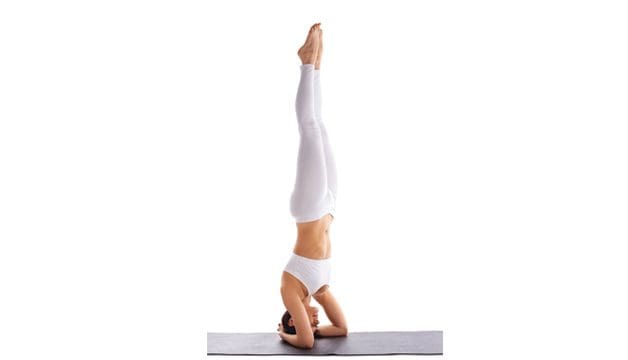
Sirsasana
Sirsasana
Sirsasana, the headstand pose, requires caution to ensure it is safe on an individual basis. Like the shoulderstand, it is not advisable for yoga practitioners who have neck, shoulder or back injuries, osteopenia or osteoporosis, high blood pressure or migraines. Any of these conditions can prevent you from doing the headstand safely. It is also imperative that your shoulders have a good range of motion and strength to support your body in good alignment.
Before I work with any of my students on the headstand, I assess their mobility and shoulder strength to make sure it is possible. If it is not deemed a good pose for your body, there are alternatives that can still give you some of the same benefits of the full sirsasana pose.
Once your ability to safely perform the headstand is known for certain, it is an excellent pose to add to your practice. Sirsasana can help balance your endocrine system, bring fresh blood flow to the head and activate your pituitary and pineal glands. It is a very energizing pose.
Sirsasana is usually done after warm-ups, sun salutations and standing poses. Then I like to include a shoulder stretch to create flexibility as follows.
- Stand with your forearms on a wall, in line with your shoulders.
- Clasp your hands together, take a step back and slide your arms down halfway between your shoulders and hips (those with good flexibility can go lower; those without good flexibility stay further up).
- Extend from the outer armpit region to the outer elbows, pressing them, your forearms, and hands into the wall. At the same time, lift your inner elbows up into your inner armpits.
- Secure your shoulder blades into your back by attempting to “scrub” your elbows both towards and away from each other at the same time.
- Keep your abdomen drawn up and into your body, and activate your legs. Hold for five to 10 breaths.
Follow this with the strengthening dolphin pose. It uses the same arm position as the previous stretch, and can be done safely by most people because it is not weight-bearing on the spine.
- Come onto your knees and forearms on your mat.
- Align your elbows under your shoulders, and clasp your hands in front of you. Create the same extension from your outer armpit to your outer elbow, the same lift from inner elbow to inner armpit, and the scrubbing action that you did in the previous stretch at the wall. This should feel as though you are lifting your heart up into your body.
- Take an inhale, and on the exhale lift your hips into the air. Keep lifting up through your sitting bones, again “scrubbing” your elbows out and in while reaching your chest towards your thighs.
- Hold for five to 10 breaths and come back down.
Now it’s headstand time! Make sure that you have the help of a teacher to begin incorporating this invigorating and energizing pose into your practice.
You may also want to try the alternative restorative version pictured here.
May you reap all the benefits of sirsasana in your practice.
